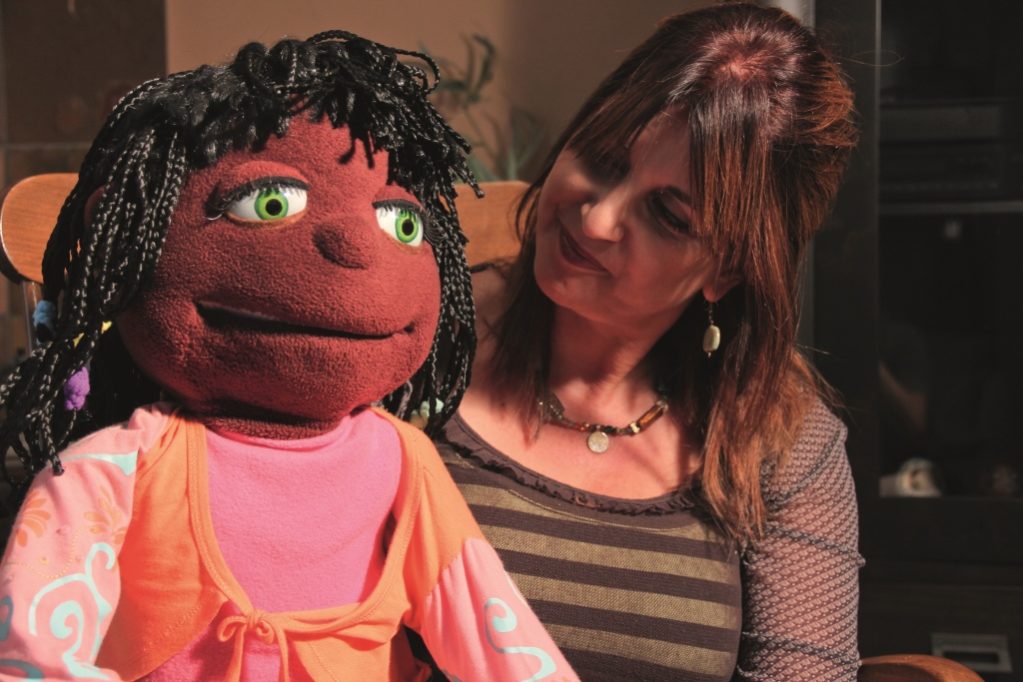For two months, his eyes, like big saucers, stared at the ceiling, lost somewhere between the living and the dead. The little boy lay listless in his hospital bed in Nairobi, Kenya. A sheet clung to his tiny frame, but it couldn’t hide the scars from the third-degree burns beneath and traces of the violence wreaked on this young life. Into this shattered existence came a ball of paper and string called Chico.
“He couldn’t talk, but Chico raised his arm and talked to him. He clung to Chico’s hand and for the first time in two months, he smiled,” says puppeteer Daniela Hadasy.
Chico is a larger-than-life puppet dog. In the hands of the puppet master, the dog with the cheeky smile has bounced his way into the hearts of sick and injured children in hospital wards across Ethiopia and Kenya.
“The idea is to draw out the emotion from the children so they can deal with their terrible traumas. When it’s a puppet talking to them and not an adult, they feel more free to talk openly. Yes, I’m sitting there and pulling the strings, but it’s the puppet who’s sharing his problems and telling the children how he feels, especially when things are bad. And because he’s telling his story, the children feel safe to tell theirs.”
The art of puppetry is nothing new. History records puppets in ancient Egypt more than 4,000 years ago. In rural Africa, puppets still flourish, but in the cities they are losing out to books and television. “Children everywhere connect with puppets, but in Africa, the puppets immediately become a part of them. It’s the right tool for children there, especially in the slums where most of them have so much anger inside and don’t even have a toy to play with,” says Hadasy, who comes from Tel Aviv, Israel.
Loading...
Hadasy was seven when she discovered her talent for mimicking voices without moving her lips.
“I used to talk to myself all the time and although I instinctively understood it was normal for children to do this, it scared me that I could use my voice without moving any part of my body. For many years, I kept it
a secret.”
If you look carefully, you can see Hadasy’s stomach moving. Sometimes, there’s a faint quiver on her lips. But most times, she sits perfectly still and lets the puppet create its magic. She holds a conversation with him, alternating between her voice and the one she’s given him. In a typical session, she starts off chatting about everyday things to build the confidence of the child.
“The puppet talks like a child and thinks like a child and so a friendship grows between them. Then, when the child trusts the puppet, we can begin to chat about really traumatic things. I’ve heard everything. Children confess to being raped, abused, to having terrible things done to them. Some of them are so lost and no one has been able to reach inside them.”
Puppets create a space of safety through which children can express their deepest fears. Follow-up sessions are done with teachers and nursing staff so the therapy is long-term.
“If, for example, medical examinations were done with puppets, it would be so much easier for children. In many of the hospitals, there’s not enough space for the parents to stay over and so children go through scary oncology treatment alone. Especially in the slums in Africa, children have been taught to hold their emotions inside, not to share them. They’re used to keeping quiet. Through the puppets, I help them express themselves, teaching them that if they have a problem, they need to talk about it because only then can someone hear them and
help them.”
Often, Hadasy gives the children small puppets of their own to keep.
“When a child holds a puppet, they feel it’s the puppet who’s doing the talking and so it’s easier for them to open up. They absolutely love their puppets; I’ve seen children take them with them to the toilet. He’s their friend because they really need him.”
She has traveled the world with her entourage of nine puppets, each with a name and a distinct personality. Taking care to create each puppet’s persona, Hadasy spends hours developing the puppet’s voice, giving it a family, making it a part of her and understanding which puppet is right for which children.
“I work in hospitals in Israel where there are a significant number of immigrant children from Ethiopia. One time a little girl asked me why I hadn’t created a black puppet. I felt so ashamed: How could I not have thought of it myself? So I gave birth to Lucia, a popular Ethiopian name in Israel. When I came back to the hospital, the girl was so excited. She said, ‘Oh, she’s like me, she looks like me. I’m so happy—she’s my friend.’”
The beauty of puppetry is that its language is universal and instinctively understood by children everywhere, even the dying child in Nairobi.
“The children in the hospital ward had gathered around his bed where Chico was hugging him, shouting enthusiastically as the puppet clasped the boy’s frail hand in his huge brown paw. We danced with him and we sang with him. I said to the nurse: ‘See that’s the point of puppetry—not just to talk but to dance and to sing and show that life is still beautiful despite the blackness inside.’”
Loading...
